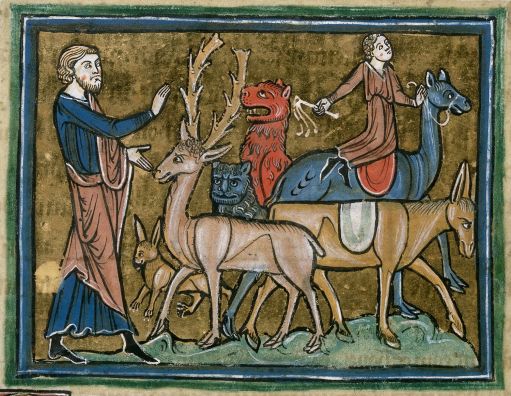Today’s publication of Pope Francis’s encyclical on climate change has, expectedly, sparked fierce debate about the enviroment. It has required people to (re)consider, defend and articulate the human perspective on the natural world: how are we defined in relation to it, by it and as part of it? To what extent is the earth our property and resource (natural capital)? How ought we manage our relationships with our local and global environments? What part, if any, should religion still continue to play in our engagement with the natural world? For many, the Pope’s comments on the environment are refreshing and hopeful. For writers concerned with cultural and historical perceptions of nature, there might be a further resonance, however: a new dialogue with the centuries-old, dominant Christian doctrine which has locked us into the idea that we are somehow separate to and inherently superior to other species. The notion that human rights and conveniences naturally come first, that every other being we lump into that vast ‘animal’ category are there to be exploited and used by us, still has a hold (who has not resorted to naming, however flippantly, uncivilised behaviour as ‘animal’?).
In a George Monbiot article on this topic, I was directed to the website of the Cornwall Alliance for the Stewardship of Creation (a US Christian organisation), which talks of ‘God-given dominium‘ and the ‘imago Dei’ as part of its plea to the Pope to reject plans to reduce burning fossil fuels. It is hard for a medievalist to read such words without thinking on typical medieval theories about man’s dominant position in the hierarchical chain of being. There is Isidore of Seville, for instance, who reminds us that the ‘human stands erect and looks towards heaven so as to seek God, rather than look at the earth, as do the beasts that nature has made bent over’ (Etymologies, Cambridge, 2006). Other writers, from Thomas Aquinas to Boethius to Bartholomew the Englishman echoed these sentiments. There is a striking resemblance to the Cornwall Alliance’s view: ‘Good climate policy must recognize human exceptionalism, the God-given call for human persons to “have dominion” in the natural world (Genesis 1:28)’. And this: ‘the physical world … [is] an ordered cosmos that rational creatures can understand and harness for human betterment; private property rights, entrepreneurship, and widespread trade’.

Royal 12 F. xiii, f. 34v. Detail of Adam naming the beasts according to their uses. Source: British Library catalogue (public domain).
As a medievalist, it’s fascinating to see how the medieval lingers in our own times. The Alliance’s standpoint certainly shows the longeivity of some medieval doctrine. But I am also uncomfortable with how their argument positions itself in relation to the medieval view, what they refer to as the ‘one culture nurtured for centuries in the Biblical picture of reality’, as though continued explotation of the earth right now can be justified through this comparison. Putting aside the fact that many – religious and secular alike – would query such a ‘picture of reality’ several hundred years on, the bigger problem for me is that this vision wasn’t exactly cut and dry even in the medieval period, so it seems a little shaky to be using it to substantiate arguments in the 21st century. What recent medieval scholars have been busy showing, in fact, is that the medieval ‘picture’ was far from uniform; it was riven with contradictions, variations, inconsistencies and ironies. My own work in this field has suggested how writers were very capable of complicating and destablising the usual representation of the human and non-human relationship, ridiculing it even (see here). In fact, a good number of medieval works suggest that ‘conceptualizing the animal realm was an ongoing, undecided question’ (Susan Crane, Animal Encounters, 2013). It seems to me that little has changed, and that if medieval thinking admitted these sorts of variations, then so should ours. It’s one reason why continued and renewed study of early attitudes towards the natural world is vital; it can do much to inform what we think and do now.

I suppose that it didn’t surprise me that The Cornwall Alliance for the Stewardship of Creation was a US Christian ‘Look after humans and the rest can go hang’ organisation – but you make a strong case for a greater mediaeval enlightenment than the Yanks give credit. Enjoyable!
LikeLike
If the focus of the post were something other than to draw parallels with medieval theories, I could have picked on numerous other issues I have with their argument (the bit about meeting the imperative to burn as much fuel as possible because it’s great for plants and the environment generally …) but I’ll refrain!
LikeLike